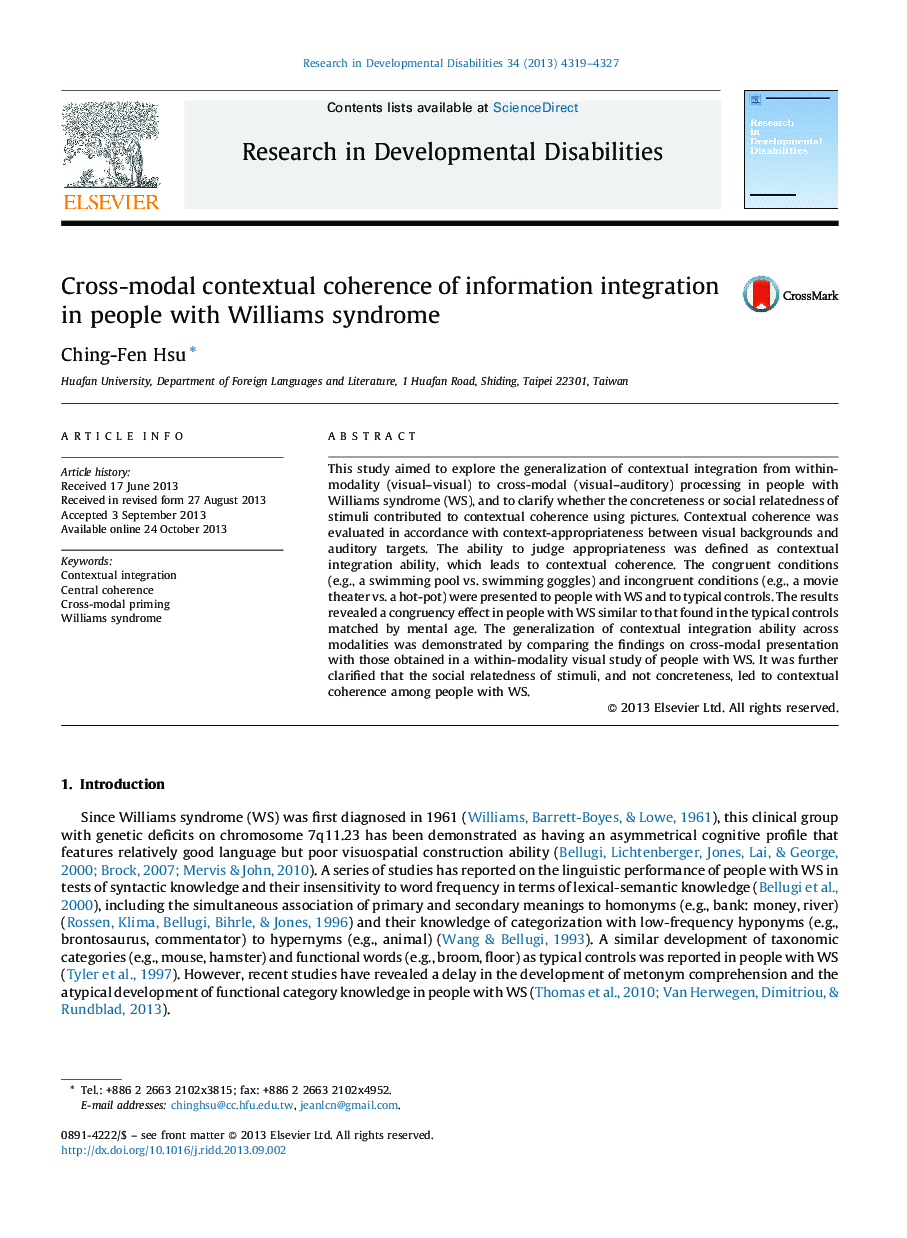| Article ID | Journal | Published Year | Pages | File Type |
|---|---|---|---|---|
| 10317807 | Research in Developmental Disabilities | 2013 | 9 Pages |
Abstract
This study aimed to explore the generalization of contextual integration from within-modality (visual-visual) to cross-modal (visual-auditory) processing in people with Williams syndrome (WS), and to clarify whether the concreteness or social relatedness of stimuli contributed to contextual coherence using pictures. Contextual coherence was evaluated in accordance with context-appropriateness between visual backgrounds and auditory targets. The ability to judge appropriateness was defined as contextual integration ability, which leads to contextual coherence. The congruent conditions (e.g., a swimming pool vs. swimming goggles) and incongruent conditions (e.g., a movie theater vs. a hot-pot) were presented to people with WS and to typical controls. The results revealed a congruency effect in people with WS similar to that found in the typical controls matched by mental age. The generalization of contextual integration ability across modalities was demonstrated by comparing the findings on cross-modal presentation with those obtained in a within-modality visual study of people with WS. It was further clarified that the social relatedness of stimuli, and not concreteness, led to contextual coherence among people with WS.
Related Topics
Life Sciences
Neuroscience
Behavioral Neuroscience
Authors
Ching-Fen Hsu,
